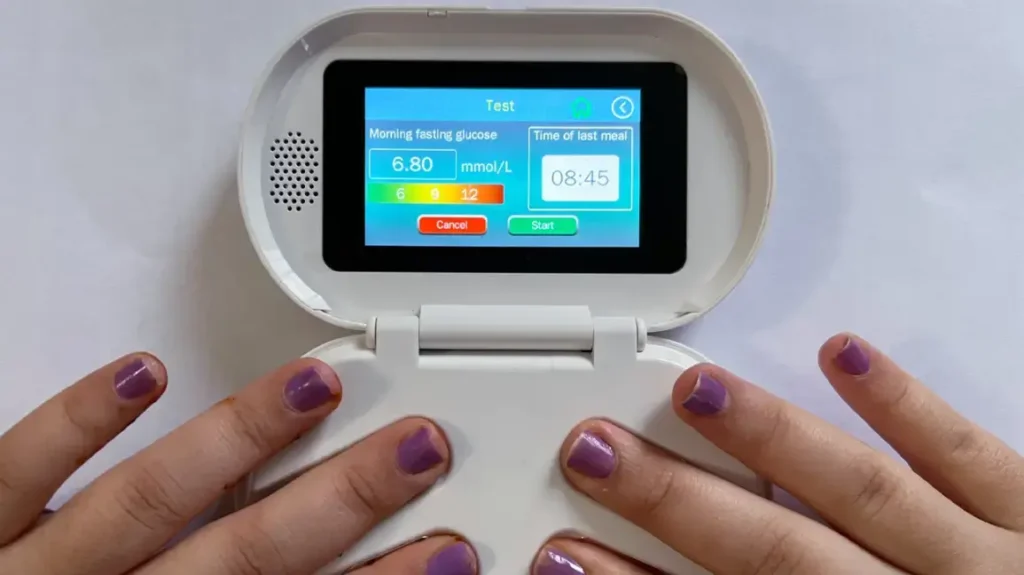In recent years, continuous glucose monitoring (CGM) has emerged as a revolutionary tool in diabetes care. While traditionally associated with type 1 diabetes, CGM is increasingly being adopted in the management of type 2 diabetes mellitus (T2DM). This technology offers real-time insights into blood glucose levels, enabling patients and healthcare providers to make more informed decisions regarding treatment and lifestyle changes.
The Importance of Continuous Glucose Monitoring in Diabetes Care
A chronic illness that affects millions of people globally is type 2 diabetes. Managing this condition requires careful monitoring of blood glucose levels to prevent complications such as cardiovascular disease, nerve damage, and kidney failure. Traditionally, glucose levels have been monitored through periodic fingerstick tests, which provide only a snapshot of the patient’s glucose levels at a single point in time.
However, continuous glucose monitoring offers a more comprehensive picture of glucose trends throughout the day. By wearing a small sensor under the skin, patients can receive real-time data on their glucose levels, allowing for more precise adjustments to diet, exercise, and medication. This continuous stream of data is particularly valuable in preventing both hyperglycemia and hypoglycemia, which are common concerns in diabetes care.
More Read About : Non-Invasive Blood Glucose Sensor Will Transform Diabetes Care
How CGM Enhances Routine Diabetes Care
Continuous glucose monitoring is not just a technological advancement; it represents a paradigm shift in how we approach diabetes care. Here’s how CGM is enhancing the routine care of type 2 diabetes:
Real-Time Data for Immediate Action
One of the most significant benefits of CGM is its ability to provide real-time data. This means that patients can see how their glucose levels respond to different foods, activities, and medications immediately. For example, a patient can monitor how their blood sugar responds to a meal high in carbohydrates and make dietary adjustments accordingly. This real-time data empowers patients to take immediate action to avoid dangerous glucose spikes or drops.
Improved Patient Engagement and Education
CGM devices often come with companion apps that display glucose trends in easy-to-understand graphs and charts. This visual representation of glucose levels helps patients understand the impact of their lifestyle choices on their health. As a result, patients become more engaged in their diabetes care and are more likely to adhere to their treatment plans. Moreover, CGM data can be shared with healthcare providers, enabling more productive discussions during appointments.
Enhanced Personalization of Treatment Plans
Every person with type 2 diabetes is different, and CGM allows for more personalized diabetes care. By analyzing glucose trends, healthcare providers can tailor treatment plans to the individual needs of each patient. For instance, if a patient experiences high glucose levels consistently at a particular time of day, their provider might adjust their medication schedule or suggest specific lifestyle changes to address the issue.
Better Hypoglycemia and Hyperglycemia Management
One of the critical challenges in diabetes care is managing the extremes of glucose levels—hypoglycemia (low blood sugar) and hyperglycemia (high blood sugar). CGM is particularly effective in preventing these dangerous conditions. The continuous data stream alerts patients and healthcare providers to potential problems before they become critical. For example, if a patient’s glucose level starts to drop during the night, the CGM device can send an alert, allowing the patient to take action before they experience severe hypoglycemia.
Challenges and Considerations
While CGM has many benefits, there are also challenges to its widespread adoption in routine diabetes care for type 2 diabetes. One of the primary barriers is cost. CGM devices can be expensive, and not all insurance plans cover them. Additionally, some patients may find the idea of wearing a sensor 24/7 uncomfortable or inconvenient.
Moreover, interpreting CGM data requires a certain level of education and understanding. Patients must be trained to use the device effectively and to understand the data it provides. This need for education can be a barrier, particularly for older adults or those with limited access to healthcare resources.
Despite these challenges, the potential benefits of CGM in routine diabetes care for type 2 diabetes are undeniable. As technology advances and becomes more accessible, it is likely that CGM will become a standard part of diabetes management.
The Future of CGM in Type 2 Diabetes Care
The future of continuous glucose monitoring in diabetes care looks promising. As the technology continues to improve, we can expect CGM devices to become more user-friendly, more affordable, and more widely adopted. In the coming years, we may see CGM integrated with other health technologies, such as insulin pumps and smartwatches, creating a seamless, comprehensive approach to diabetes care.
Furthermore, as more data is collected from patients using CGM, we will gain a deeper understanding of the nuances of type 2 diabetes. This wealth of data could lead to new treatment strategies, more precise medication dosing, and better overall outcomes for patients.
Conclusion
Continuous glucose monitoring is transforming the landscape of diabetes care, particularly for those with type 2 diabetes. By providing real-time data, enhancing patient engagement, allowing for personalized treatment, and improving the management of glucose levels, CGM offers a powerful tool in the fight against diabetes. As technology continues to evolve, CGM will likely become an integral part of routine diabetes care, helping patients lead healthier, more informed lives.


